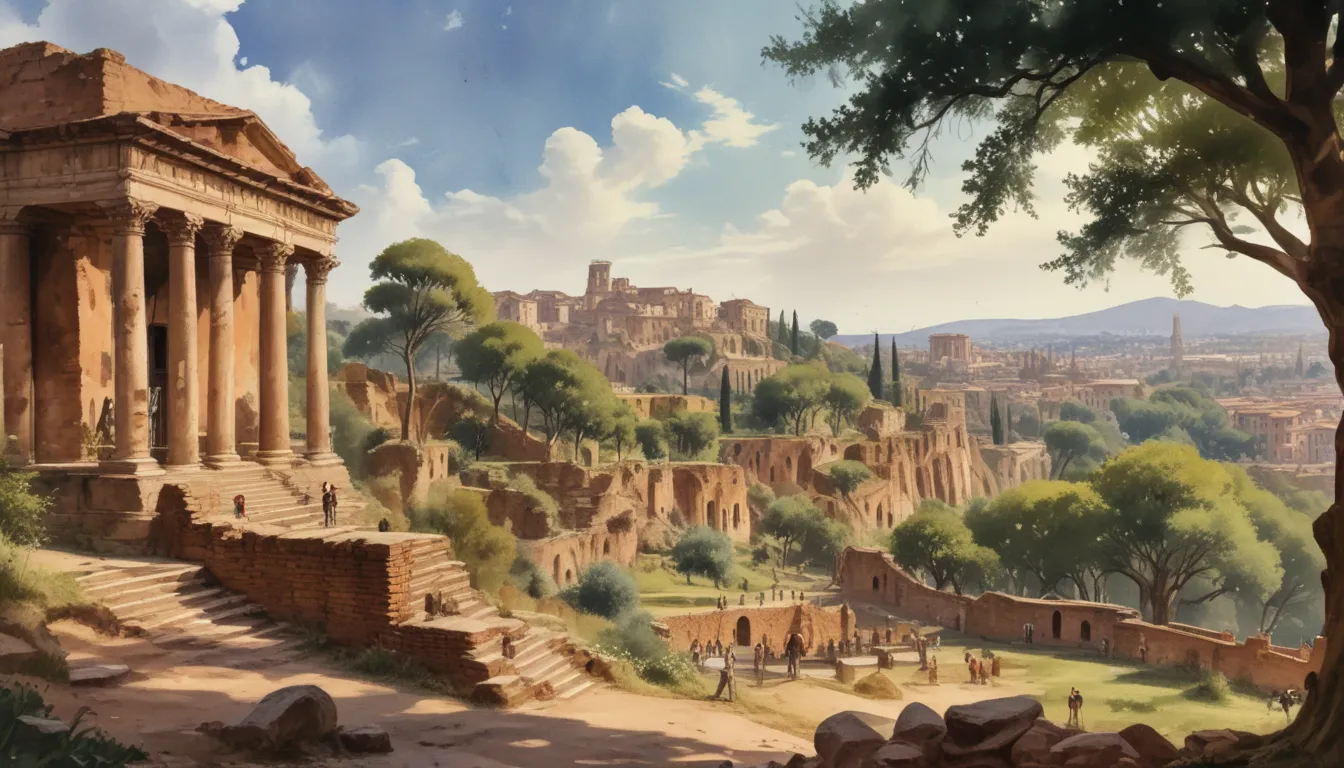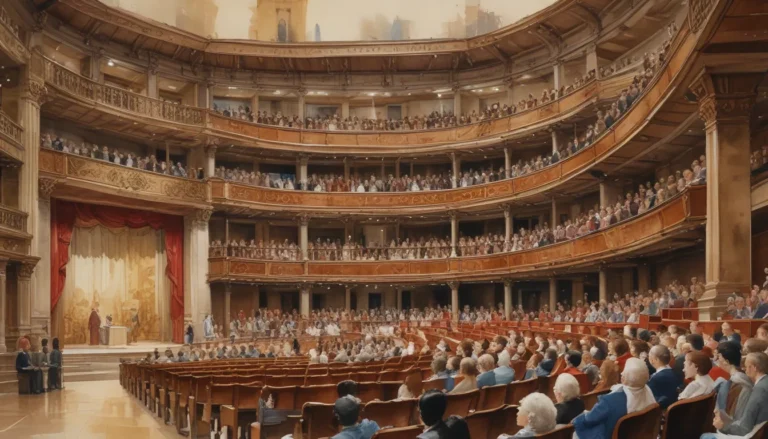The images in our articles are for illustrative purposes only and may not exactly match the content. They are intended to capture your interest and complement the text, not to replace it.
Welcome to Palatine Hill, a captivating ancient archaeological site in Rome, Italy, where history comes alive. As one of the legendary Seven Hills of Rome, Palatine Hill is steeped in fascinating legends and boasts a rich cultural heritage that dates back thousands of years. Join us as we uncover the mysteries and secrets of this extraordinary landmark.
Discover the Birthplace of Ancient Rome
Palatine Hill is known as the birthplace of Ancient Rome, where Romulus founded the city in 753 BC. This hill holds immense historical significance as one of the most important archaeological sites in Rome, offering a glimpse into the origins of this legendary city.
Step Into the World of Emperors
During the Roman Empire, Palatine Hill became the preferred residence of emperors and aristocrats. The hill is adorned with extravagant palaces and luxurious villas, showcasing the opulence and grandeur of the Roman elite. Imagine yourself walking in the footsteps of emperors as you explore this historical site.
Marvel at Spectacular Views of Rome
One of the highlights of visiting Palatine Hill is the breathtaking panoramic view it offers of the city of Rome. From the top, you can see iconic landmarks such as the Colosseum, the Roman Forum, and the Circus Maximus, providing a stunning backdrop to this ancient site. Take in the beauty of Rome from a unique vantage point.
Explore the House of Augustus
Palatine Hill is home to the House of Augustus, where the first Roman emperor resided. This beautifully preserved house is adorned with intricate frescoes and mosaics, offering a glimpse into the lavish lifestyle of the imperial ruler. Step inside and immerse yourself in the world of ancient Roman opulence.
Uncover the Mysteries of the Lupercal Cave
According to mythology, Palatine Hill is the location of the Lupercal Cave, where Romulus and Remus, the legendary founders of Rome, were nursed by a she-wolf. Exploring this mystical cave adds an element of intrigue to your visit, connecting you to the ancient origins of Rome.
Witness Ongoing Discoveries
Palatine Hill is like a living museum, with ongoing excavations and discoveries that shed light on Rome’s ancient past. Visitors can witness archaeologists at work, uncovering new artifacts and unraveling the mysteries of this historical site. The thrill of new discoveries awaits around every corner.
Admire the Stadium of Domitian
Near the summit of Palatine Hill lies the Stadium of Domitian, an impressive elliptical arena that once hosted various sporting events. This ancient stadium could accommodate up to 15,000 spectators and stands as a testament to Roman engineering and grandeur. Imagine the cheers of the crowd echoing through time.
Find Serenity in the Gardens
Amidst the ruins and ancient structures, Palatine Hill features beautifully landscaped gardens. These serene and picturesque green spaces provide a peaceful respite from the bustling city below, creating a harmonious blend of nature and history. Take a moment to relax and appreciate the beauty that surrounds you.
Discover a UNESCO World Heritage Site
In recognition of its historical and cultural significance, Palatine Hill, along with the Colosseum and the Roman Forum, was designated as a UNESCO World Heritage Site. It serves as a testament to the enduring legacy of the Roman Empire and attracts visitors from around the globe. Immerse yourself in the world of ancient Rome’s prestigious past.
Visiting Palatine Hill is like stepping back in time, immersing yourself in the grandeur and majesty of ancient Rome. With its fascinating history, stunning views, and ongoing excavations, it truly is a must-see destination for history buffs and curious travelers alike.
FAQs About Palatine Hill:
- What is Palatine Hill?
-
Palatine Hill is one of the seven hills of Rome and is considered the birthplace of the city. It is an archaeological site that boasts the ruins of palaces, temples, and other structures that date back to ancient Rome.
-
How do I get to Palatine Hill?
-
You can reach Palatine Hill by taking public transportation or walking from the Colosseum. There is also a dedicated entrance to Palatine Hill near the Roman Forum.
-
Can I explore Palatine Hill on my own?
-
Yes, you can explore Palatine Hill at your own pace. There are signs and information boards throughout the site that provide historical context and insights into the different ruins.
-
Are guided tours available?
-
Yes, guided tours are available for those who want a more in-depth understanding of Palatine Hill’s history and significance. They can provide valuable insights and anecdotes about the ruins.
-
What are some notable attractions on Palatine Hill?
-
Some notable attractions on Palatine Hill include the Flavian Palace, Domus Augustana, and the Palatine Museum. These structures offer a glimpse into the lavish lifestyle of ancient Roman emperors.
-
Do I need to purchase separate tickets for Palatine Hill?
- No, your ticket to the Colosseum also grants you access to Palatine Hill and the Roman Forum. It’s advisable to purchase the combined ticket in order to explore all three sites.
Palatine Hill’s fascinating history and archaeological wonders make it a must-visit destination for those eager to explore the grandeur of Ancient Rome. Immerse yourself in a world of history and intrigue as you delve into the secrets of this extraordinary landmark. Don’t miss the chance to experience the compelling allure of Palatine Hill when you visit Rome.






